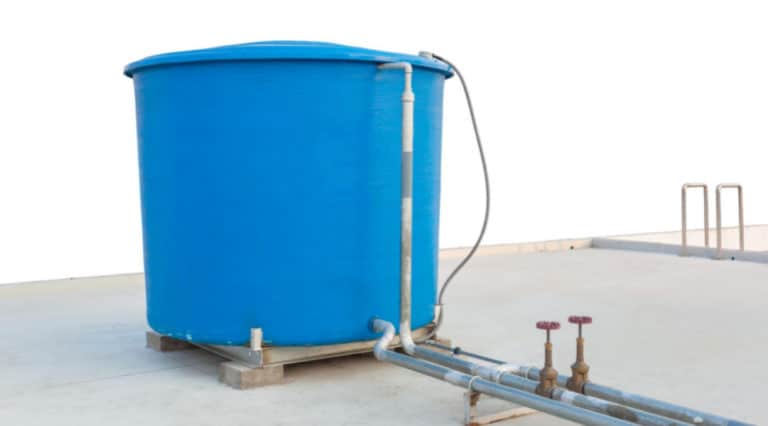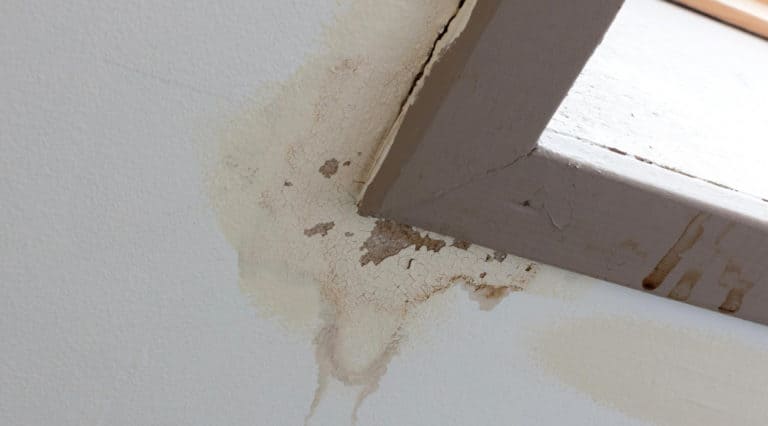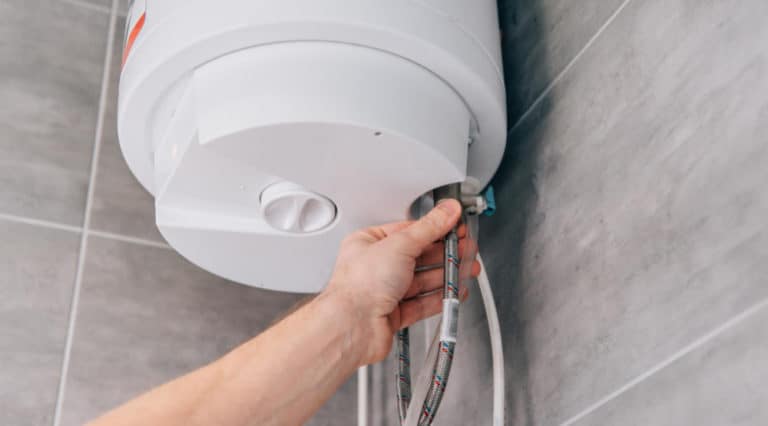Find My Local Expert Is it a Roof Leak or...
Read More
How Big of a Water Tank Should I Get for My Home?
At a time when the environment—specifically our impact on it—is on everyone’s mind, many people are looking for more environmentally-friendly ways of running their household. The most obvious examples of this are solar power and better insulation, but water conservation is also an important part of a greener home. Enter water tanks.
Water tanks provide a means of catching and storing water for later use, and can greatly reduce the amount of water you pull in from the local infrastructure, reducing the demand for that water and, as a result, reducing the load on water processing plants.
The amount of water you can typically save using a water tank will depend on where you are in the world and the size and shape of your property. An increasing number of off-grid homes are able to be completely independent with their water consumption, but they need to live in a region with enough rainfall to sustain that. Living in a small property in a dry part of the world will make it hard to get enough water.
Water tanks can be used for a range of purposes, from showering to flushing the toilet to watering your plants and even washing dishes and drinking, and they provide a constant supply until they are empty, which, for most homeowners, can take days of constant use.
Even if the environment is not at the top of your priority list right now, there are still benefits to a water tank. For example, if you live in a region with an erratic water supply, having an emergency water tank can ensure you are never without water. Similarly, if you live in a dry part of the world that often implements hosepipe bans, water tanks can provide you with a way of watering your plants or washing your car without breaking the law!
Water tanks can even be a legal requirement in some cases. For example, Napa County requires that any rural home that is not within reach of a city fire hydrant has to have 3,300 gallons of water available in the event of a fire. In situations like that, the bulk of the expense is already a legal requirement, and adding some water storage for personal use is just a matter of buying a bigger tank!
All You Need to Know About Water Tanks
If you’re completely new to the world of water tanks, or even if you know a little but aren’t sure on the specifics, we’ve got you covered. We’re going to get into details of having a water tank, from water tank size options, to tank capacity, makes, and materials.
#1 Hot Water Tanks
While this post is primarily focused on water storage tanks, there are also hot water storage tanks, which are heavily insulated and heat the water in the tank so that you will always have hot water available. Also known as immersion heaters, these types of water tanks can save a homeowner money on their utility bills in the right circumstances, though it should be noted that they are not always the most cost-effective way of getting hot water.

Hot water tanks in a typical residential home will have much less capacity than a water storage tank. This is because the demand for hot water will usually be less than the demand for cold, and the more water there is to heat, the more expensive the hot water tank is to run.
#2 Rain Capture
If you are filling your water tank with rainwater, one of the most crucial components of your water tank install is the rain capture system you have in place. You should be looking to capture every drop of water that falls on the roof of your property. Every drop of water that spills over the edge of your guttering or leaks through a loose joint is a drop that should have found its way to your water tank. As such, it is vitally important that your guttering be professionally installed and properly maintained.
Of course, the larger your roof, the more water you can potentially capture, but this is often a hard limitation on your water collection capacity since few people will be willing to build an extension on their property just to add more roof area for collecting water. And, in any case, there is a natural limit on any property’s water collection capabilities—the amount of rainfall the region gets.
Tank Materials
First off, bear in mind that we are talking exclusively about water storage tanks and not hot water tanks. A hot water tank is a different animal entirely and is built to keep the heat in. They are considerably heavier and more expensive than water storage tanks and need to be heavily insulated to work effectively.
For water storage tanks, the most common material you are likely to come across is plastic (HDPE), as this offers the best combination of durability and cost-effectiveness. Plastic tanks come in a wide variety of sizes and colors, though it should be noted that white clear plastic should never be used for an outdoor storage tank, as this color plastic will allow UV radiation (sunlight) to get through, which in turn prompts the growth of algae inside. Not only is this bad in that you probably don’t want algae in your water, but it also degrades the plastic much faster than it would otherwise.
Cement is an alternative option to plastic, but these tanks need to be installed by a contractor and are only intended for larger capacities as it is not cost-effective to install a small cement water tank. The advantage, however, is that cement tanks are fire resistant and highly durable…when installed correctly. Improper installation can lead to cracks or other failures in the cement.
Finally, we have corrugated steel, which is often chosen for its aesthetic value when a water tank will be very visible. These tanks are often more expensive than their plastic counterparts and are also prone to corrosion over time—something that neither plastic or cement faces—so bear that in mind if you are considering this material for your water tank.
Tank Capacity and Sizes—Which Is Best For You?
Choosing a tank capacity first requires you to have an idea of how much water you are likely to use. It can be difficult to get a handle on this figure since we rarely know exactly how much water is passing through our shower or tap, but ballpark figures should suffice. As a general rule, you should plan for approximately four weeks-worth of water supply. So, if your weekly water usage comes to 6,000 gallons a week, you should be looking to get at least 24,000 gallons of water storage.
Of course, water tank capacity is rounded, so you might have to get a 25,000 or 30,000 tank to meet your four-week demand, but having more storage is always going to be better than not having enough!
The next thing to consider is how much water you can harvest from your property. As a rough guide, half an inch of rainfall on a 1,000 square-foot roof should yield about 300 gallons of water. Remember that the design of your roof and the quality of your rain capture system will affect this figure also. If you intend to only put rainwater in your storage tank, you will be wasting your money getting a 30,000-gallon tank when you are unlikely to get anywhere near that much rainfall. Don’t forget, you will be using the water as well.
Finally, as we mentioned above, you will need to factor in any local laws regarding water storage. We mentioned Napa County’s law requiring rural properties to have a certain amount of water storage for fire safety purposes, but these kinds of laws are usually restricted to remote regions that are away from the infrastructure of a large town or city. If you are installing a large water tank, however, you may need to get a permit. This is often the case when installing a cement water tank, but can also be the case for larger plastic or corrugated steel water tanks.
Hire a Plumber
Whether you are installing a complete water collection system with a view to going entirely off-grid, some small additional water storage for emergencies, or a hot water tank to save money on your utility bills, you should get a qualified plumber to do the work.
While some parts of water tank installation look simple enough, there are plenty of complicated aspects that need an experienced eye. For example, it is possible to expand the water storage capacity of a home by adding an additional tank, rather than upgrading the existing one. However, problems can arise depending on the height of the tanks relative to each other.
Also, as we’ve mentioned, the guttering of your property is critical for water collection. There is no sense having a big home water tank if half of the water hitting your property spills out of improperly installed pipes!
You May Also Like...
How to Troubleshoot and Fix Electric Water Heaters
Find My Local Expert How to Troubleshoot and Fix Electric...
Read MoreFree Storage Heaters for UK Pensioners
Find My Local Expert Free Storage Heaters for UK Pensioners...
Read MoreElectric Wall Heater Installation
Find My Local Expert Electric Wall Heater Installation Considerations Many...
Read MoreBeware of the fishy smell in your home!
Find My Local Expert Beware of the Fishy Smell in...
Read MoreNeed Expert Advice?
My Trusted Expert Guarantee
Experts Have Been Vetted & Approved




